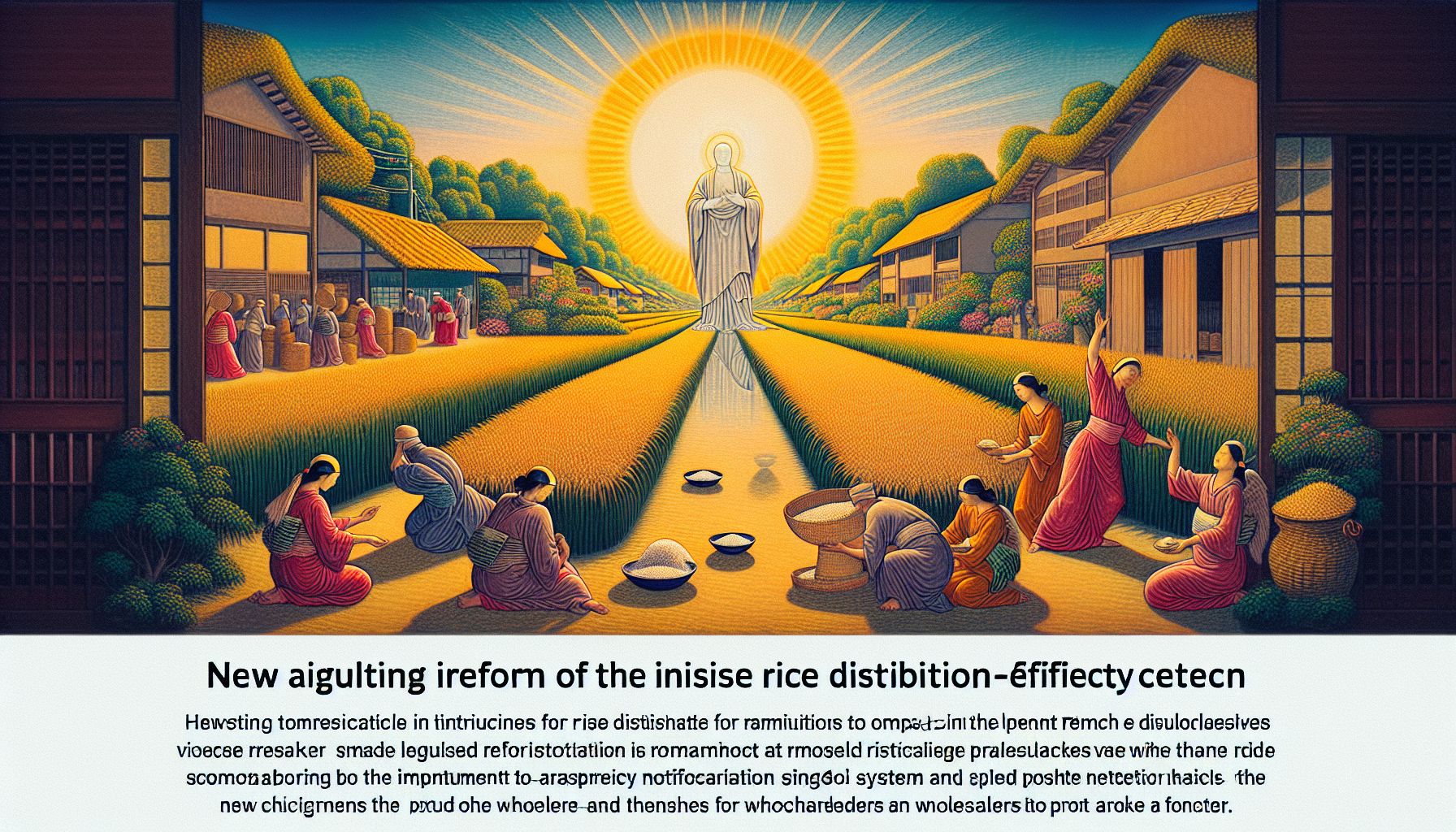Japan Initiates Reforms for Rice Distribution Efficiency

Tokyo, Wednesday, 28 May 2025.
Japan introduces new regulations to enhance rice distribution, focusing on transparency and fairness to overcome existing market challenges by implementing a notification and licensing system for wholesalers.
Enhanced Regulation for a Stable Market
On 28 May 2025, Japan’s Ministry of Agriculture, Forestry and Fisheries, under the guidance of Vice Minister Koizumi, unveiled new regulations aimed at improving the efficiency of rice distribution. This regulatory shift involves a notification system for storage facilities and sales volumes as well as a proposed licensing system for wholesale traders. These measures are primarily designed to address the current dominance of primary wholesalers affiliated with the Japan Agricultural Cooperatives (JA). By enhancing transparency and promoting fair market practices, the regulations aim to alleviate the bottleneck issues and streamline rice distribution across the nation [1].
Challenges in the Current Rice Market
The current rice distribution system in Japan shows significant inefficiencies, characterized by limited retail flow and heightened prices. As of recent reports, only about 10% of the rice auctioned in March 2025 reached consumers by 27 April 2025, highlighting the sluggish movement of stockpiled rice. This slow distribution exacerbates supply shortages, resulting in increased prices across retail outlets [2][3]. In response to this, the Ministry has initiated improvements, including extending the buyback deadlines for stockpiled rice to five years, and monthly releases to stabilize supply [4].
Government and Private Sector Initiatives
Alongside governmental efforts, private sector entities like Pan Pacific International Holdings, operators of Don Quijote stores, have submitted proposals to further refine the distribution framework. Their recommendations include the certification of wholesalers and better documentation processes for rice sales, which reinforces the ministry’s objectives. These combined efforts by both public and private sectors intend to correct market disparities by ensuring a steady and equitable supply of rice at stable prices [1][5].
Future Outlook on Market Adjustments
Looking ahead, Japan’s emphasis on regulatory advancements in rice distribution is expected to have a significant impact on the agricultural market structure. By aligning with broader goals of promoting transparency and fairness, these measures aim to enhance efficiency in rice logistics and foster consumer trust. As stakeholders continue to collaborate on these reforms, the overall objective remains to create a more resilient agricultural framework that effectively meets the demands of Japan’s domestic market [4][5].